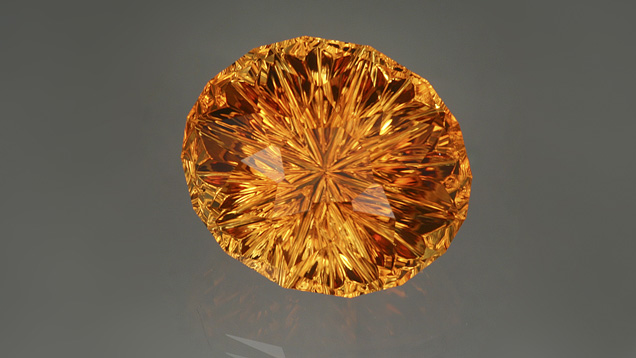Citrine is rare in nature. In the days before modern gemology, its tawny color caused it to be confused with topaz. Today, its attractive color, plus the durability and affordability it shares with most other quartzes, makes it the top-selling yellow-to-orange gem. In the contemporary market, citrine’s most popular shade is an earthy, deep, brownish or reddish orange.
A trace of iron in citrine’s structure is responsible for its yellow-to-orange color.

Citrine—the transparent, pale yellow to brownish orange variety of quartz—is rare in nature. In the days before modern gemology, its tawny color caused it to be confused with topaz. Citrine’s attractive color, plus the durability and affordability it shares with most other quartzes, makes it the top-selling yellow-to-orange gem. It’s an attractive alternative not only for topaz, but also for yellow sapphire. The finest citrine color is a saturated yellow to reddish orange free of brownish tints.
Since natural citrine is rare, most of the citrine on the market is the result of heat treatment, which causes some amethyst to change color from undesirable pale violet to an attractive yellow. The amethyst’s original hue can determine the richness of the resulting citrine’s yellow color.
Citrine crystals occur in a wide range of sizes, and citrine sizes up to 20 carats are readily available in jewelry. Although citrine is available in standard shapes and sizes, many high-end jewelry designers and gem carvers have fashioned the warm yellow gem into unusual cuts for jewelry and carvings.













